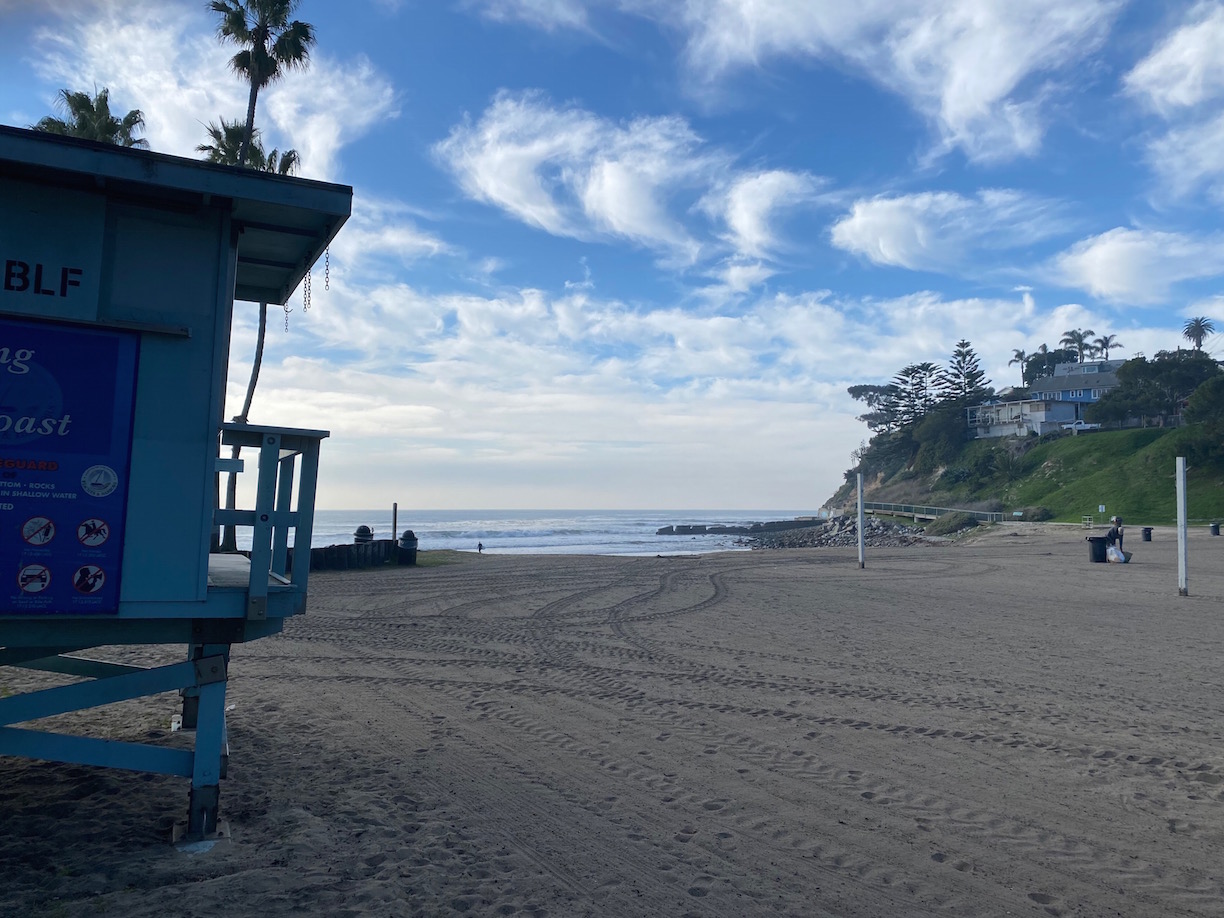Lose Track Of Your Timing Tuesday Surf & Culture Report
Lost Boys & Co...
The Professor!!
We joined the esteemed biologist José Bacalläo this morning for a surf at Cabrillo Beach. Photo #1 shows the Spanish Steps and the rocky promontory just inside of the seaweed lined outside rocks. Bacalläo, now works at the Cabrillo Beach Marine Museum, just steps from this break and took some time to show us the line-up and where we might be most successful. #2 shows the sweep of the beach and the second peak to the south of the main point. It was relatively uncrowded with only five of us in the water initially. There were two guys left when we got out of the water and then a couple of SUP-ers paddled out at the second peak. This was a straight west swell and it would be interesting to see how it might work on a south swell. It's a soft wave, so get ready to paddle a bit...
10 Miles visibility under partly cloudy skies. Winds were offshore by 4 to 6kts and the sea surface was smooth almost glassy, tempered by the seaweed. The air temperature was 50.5º and the water was a chilly 59.0º. Low tide was at 9:42am +1.4' and high tide was at 3:17pm +2.8'. The buoy showed a west swell out of 271º at 3.9' and it was 2' to 3' with some nice right rollers along the sweep of the beach.
So we were prepared to go on a bit on how Cabrillo (#3) is actually pronounced Cab-rill-o and not Cab-ree-o because Cabrillo was Portuguese and not Spanish. That is until we consulted the archives of the San Diego History Center. There seems to be quite a vigorous academic discussion about whether Joaõ/Juan Rodrigues/Rodriguez Cabrillo was Portuguese or Spanish. Part of the argument focuses not on the Cabrillo name, but on the Rodrigues patrimony. Of course someone named Joaõ Rodrigues is the Iberian equivalent of "John Smith." The squabble starts in 1615 with Antonio Herrera saying unequivocally that Cabrillo was Portuguese. However he was unclear about his sources and the 1755 Lisbon earthquake and tsunami washed away the main archives (those damned tsunamis even then!) Still a Presidential (U.S.) proclamation dedicated a historic site at Point Loma in 1913 and California made September 28, "Cabrillo Day" in 1935 mostly predicated on Herrera's surviving work. And who are we to quibble with the United States of America and the great state of California? So we're sticking with our original Portagee contention and even though he was in the employ of Spain for most of his career, we're going to imagine that all those Iberians switched allegiances depending on who was paying more for the latest discovery. We are marking September 28, in red and green to remember his achievements. That is until we discover that he marauded the new world and subjugated the locals and surfed their breaks... Please Joaõ, say it ain't so...
✠
"When the surf breaks, we'll fix it"The Professor!!





